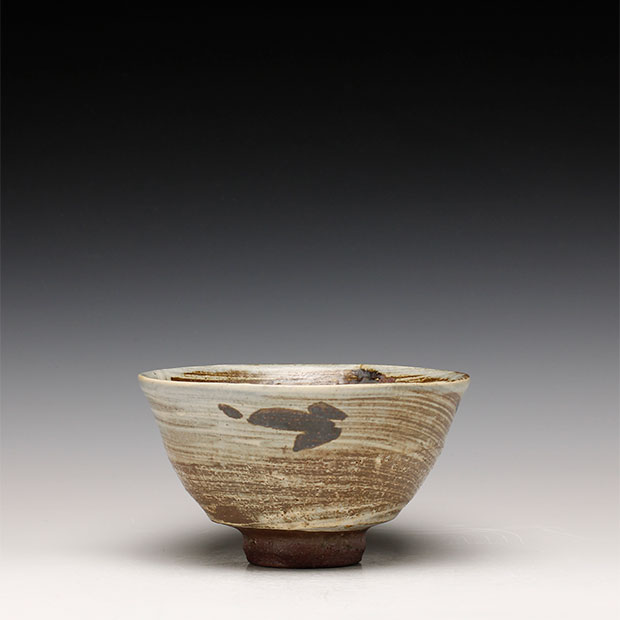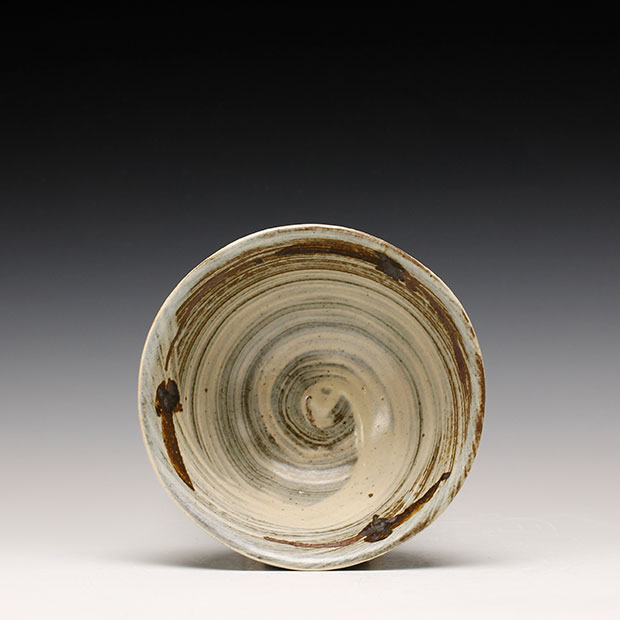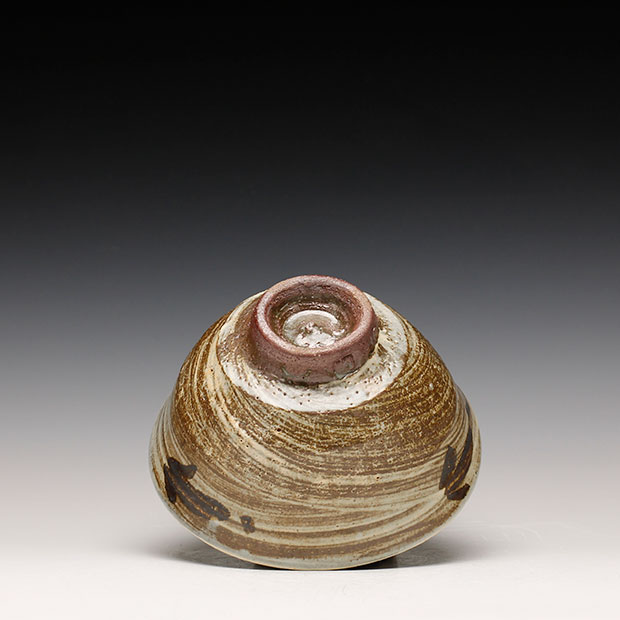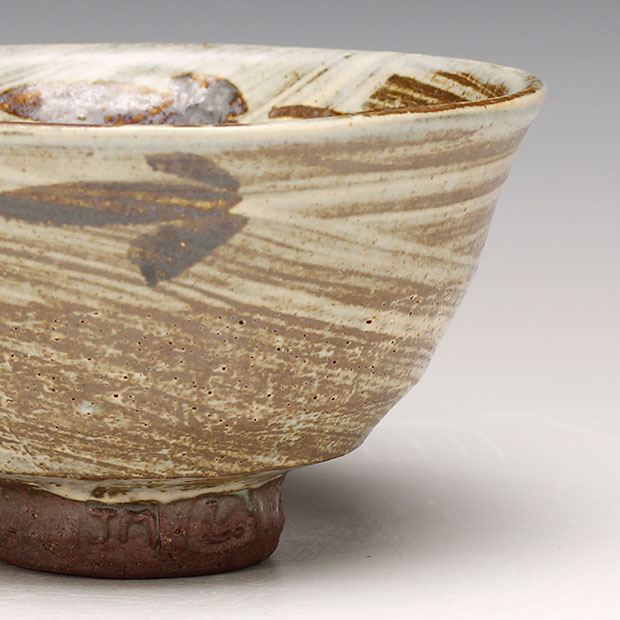BIOGRAPHY
Jim Malone was born in Sheffield in 1946, just as the first generation of post war potters were beginning to absorb Bernard Leach’s “A Potters Book,” published six years before. His father was a cabinet-maker, but died when Jim was twelve, and his Welsh mother took the family back to her homeland. His experience of school was an unhappy one. Malone refused to fit in – the beginning of a lifelong trait, which has shaped his personality and his cynical attitude towards the ever-changing tides of artistic fashion.
Drawing had always been a childhood passion for Jim. In 1972 he was accepted into the foundation course at Camberwell School of Art where his ceramic tutor, Ian Godfrey, began to open his eyes to the craft. Ian led a visit to the Victoria and Albert Museum to look at Korean pots and Malone was deeply impressed by the life and spirit of the work. From then on he began to look at what he described as the “taproot” – Korean, early Chinese, and medieval English pots in the London museums.
As he began to develop his throwing skills, Jim also avidly read Leach’s “A Potters Book” and Michael Cardew’s “Pioneer Pottery” and was continually molded by conversations with his counterparts, Ian Godfrey, Ewen Henderson and Colin Pearson. All three men demonstrated the importance of questions rather than answers – that there were infinite means of throwing a pot or turning a foot. Photographs of ancient vessels were pulled out and enthusiastically discussed. In the summer vacation before his final year, he spent two industrious months at Winchcombe Pottery in Gloucestershire under Ray Finch. The example of a “proper” workshop where he was able to gain experience in all areas of a studio as well as working on his own throwing in the evening was a taste of realism very necessary for an art school student.
After his degree show ended, he was able to set up a studio in a remote barn at Llandegla on the Horseshoe Pass in Wales. There he built a gas kiln and started to produce. Years later he left Wales for various practical reasons and took up a teaching position in Carlisle at Cumbria College of Art in 1982 alongside fellow potter, Mike Dodd. In 1984 Malone and his family found a cottage at Ainstable in the beautiful Eden Valley, a few miles southeast of Carlisle, where he made a new workshop and kiln in the generous space of the attached outbuilding.
Malone is a consummate craftsman, but the pots suggest that he is still amazed by his art, that it offers him surprises every day. This is surely why the work has a vitality and freshness rare in modern ceramics. Jim has been a full-time potter since he left teaching in 1990.
STATEMENT
The means by which my pots are produced is at least as important as the end result. This is what gives the work its character, its soul. I would never, for example, choose to work on an electric wheel. My wheel is a very light Korean type kick wheel which demands sensitivity in use but in return allows a closer, more intimate contact with the material.
It is more expressive, emphasizing the soft, sensual, and essentially feminine nature of clay. Pots are coaxed into being rather than forced and, somewhere within its hypnotic and silent rhythm pots are born, almost without notice. This is what Hamada meant by “losing your tail.”
My glazes are made up of granites, wood ashes, clays and silts which are local to me. These unrefined materials have greater character than their industrially processed counterparts, though I do, of course, have to buy in some materials unavailable to me in any other way. In this way the pots become part of the place in which they were made: indigenous and unique.
Glaze firings take place twice a year (or sometimes less these days) in the large two-chambered climbing kiln fired with oil and wood. Having always chosen to work alone, the oil is of great assistance and I still benefit from the enhancing effects of fly ash from the wood on glaze and body.
The kiln is an idiosyncratic beast but I have come to see it as a partner and have grown used to its vagaries, hot and cool spots, and variations in atmosphere and am able to make creative use of them.
After more than forty years of working in this area, never interested in spreading wider, only digging deeper, undistracted by fashion or trends, in my endeavor to understand and express the beauty trough pottery form, my legacy will be the body of my work I leave behind. On this I will be judged.
 $200
$200
 $200
$200


